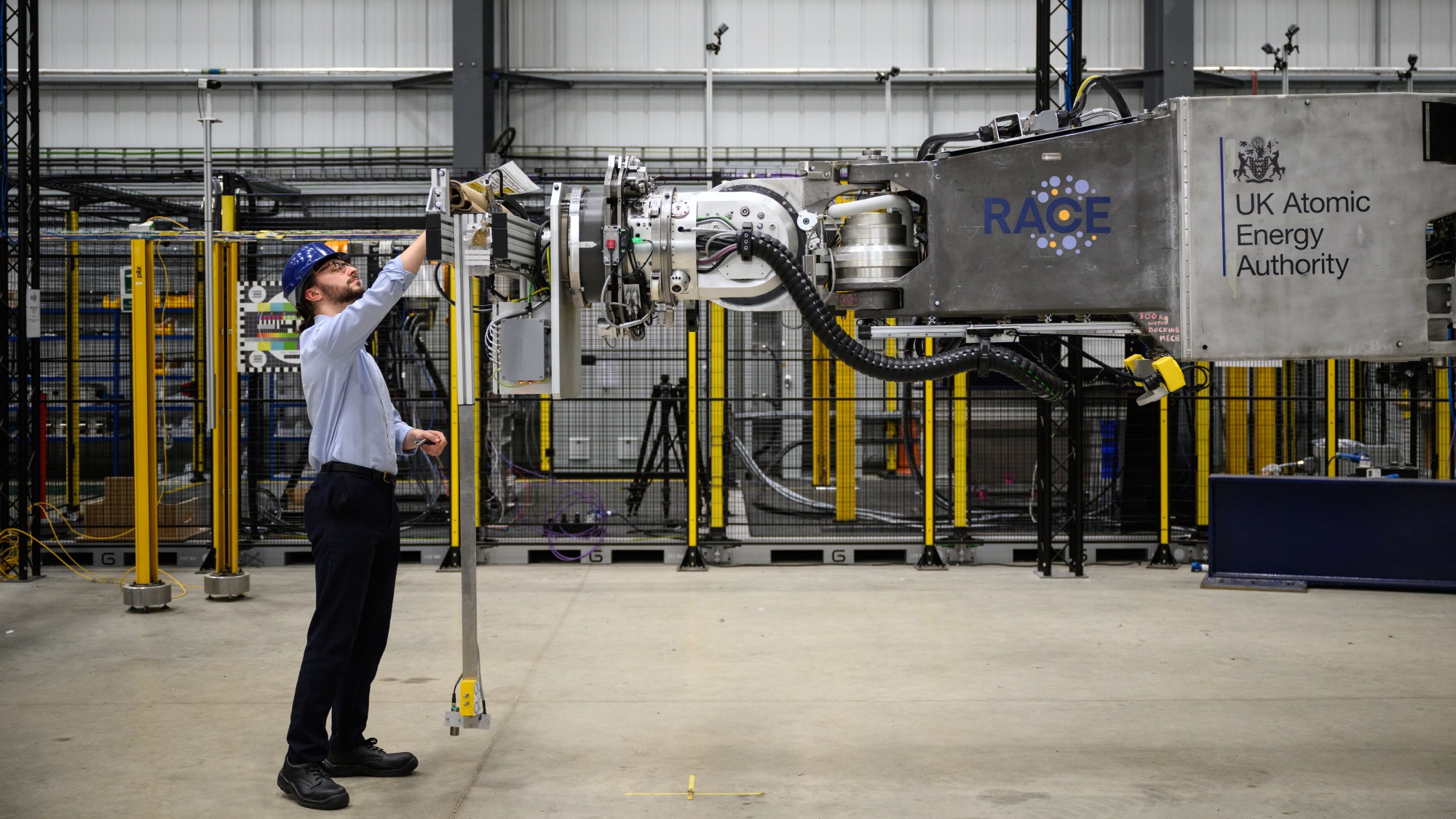Science
Scientists Make Major Strides Toward Achieving Nuclear Fusion

Recent advancements in nuclear fusion research have revived hopes for a clean and virtually limitless energy source. The UK Atomic Energy Authority announced a major breakthrough last week, revealing that researchers successfully stabilized the fusion process in a spherical tokamak, a compact fusion machine, for the first time. This achievement marks a significant step forward in humanity’s quest to replicate the fusion reaction that powers the sun.
Understanding fusion involves distinguishing it from fission, the process commonly associated with nuclear power. While fission generates energy by splitting heavy atoms, fusion combines light atoms, specifically hydrogen isotopes, at extreme temperatures, forming plasma. This plasma is a superheated, electrically charged gas in which atomic nuclei fuse together, creating helium and releasing a substantial amount of energy in the process. This reaction is akin to the processes occurring in stars.
The allure of nuclear fusion lies in its potential as a “virtually limitless, carbon-free source of energy.” According to nuclear physicist Annie Kritcher, fusion represents the “holy grail of energy.” Estimates suggest that a single glass of fusion fuel could generate enough energy to power a home for over 800 years. Unlike fission, fusion does not produce long-lived radioactive waste and eliminates the risk of catastrophic nuclear accidents.
Bill Gates recently emphasized the transformative potential of fusion on his Gates Notes website, stating, “If you know how to build a fusion power plant, you can have unlimited energy anywhere and forever.” With the global energy demand soaring, some scientists propose that fusion could even facilitate carbon-capture systems to help mitigate climate change.
Despite its promise, achieving controlled nuclear fusion remains a formidable challenge. The intense heat and pressure required for fusion mimic the conditions found in the cores of stars. While British scientists first achieved nuclear fusion in a laboratory setting in 1934, commercial viability remained elusive for decades.
In 2022, researchers at the Lawrence Livermore National Laboratory in the United States made a landmark achievement by producing a fusion reaction that released more energy than was consumed. This breakthrough was described by Kritcher as a “Wright brothers’ moment,” sparking renewed optimism about the feasibility of fusion energy.
The world’s largest fusion experiment, the International Thermonuclear Experimental Reactor (ITER), is currently under construction in France. Funded by 33 countries, including China, Russia, and the United States, ITER has faced delays and is not expected to become operational before 2035. It aims to demonstrate the scalability of fusion but will not generate electricity.
In contrast, the private sector is rapidly advancing in the fusion landscape. Numerous tech companies are investing heavily in fusion start-ups, motivated by the need for energy to power their data centers. One notable example is Commonwealth Fusion Systems, which is working towards activating a nuclear fusion power plant by 2027. If successful, this facility could begin supplying electricity to the grid in the early 2030s.
Additionally, various private and state-backed enterprises in China are competing to establish commercial fusion reactors by 2035 or sooner. Despite these ambitious timelines, experts agree that widespread adoption of fusion power plants is unlikely until at least the 2040s.
As research progresses and investments pour in, the dream of harnessing nuclear fusion for clean energy is gradually becoming a tangible possibility.
-

 Health1 week ago
Health1 week agoRare Brain Condition Discovered More Common in New Mexico
-

 Politics1 week ago
Politics1 week agoPrince Andrew Steps Back from Royal Duties Following Epstein Memoir
-

 Entertainment1 week ago
Entertainment1 week agoTrump Commutes George Santos’ Sentence, Sparks Controversy
-

 Sports1 week ago
Sports1 week agoMLS Decision Day 2025: Playoff Spots on the Line as Teams Clash
-

 World1 week ago
World1 week agoYoung Driver Dies in Collision with Box Truck in El Cajon
-

 Health1 week ago
Health1 week agoRemembering Mary Ingleby: A Life of Love, Teaching, and Music
-

 Science1 week ago
Science1 week agoIdaho State University Launches Haunted Science Laboratory on Oct. 25
-

 Politics1 week ago
Politics1 week agoNavy Veteran Max Quattromani Launches Campaign for Assessor Seat
-

 Lifestyle1 week ago
Lifestyle1 week agoKent Hamilton Named Southeastern Farmer of the Year at Expo
-

 Sports1 week ago
Sports1 week agoSaquon Barkley Reacts to James Franklin’s Dismissal from Penn State
-

 Health1 week ago
Health1 week agoScientists Warn: Human Brain Struggles to Function After Midnight
-

 World1 week ago
World1 week agoHamas to Return Additional Hostage Remains on Friday








